Thinking about redesigning your website? Think again.
User Behaviour & Habits
Users. Remember them?
When users interact with organizations now there are tons of assumptions they make without even thinking. They expect they'll look you up on some semi-random search engine (yes most of the time it will be Google but never say never). Even if they know your domain, they'll still slap in whatever they can remember and expect the browser to magically make sense of it.
They may even speak it into their device instead. They may type it into their social media search. I'm not sure people give it a lot of thought where they look any longer.
Notice I didn't say website, phone, computer, or tablet? Businesses have become a kind of de facto disembodied digital spirit – this is not a good thing. It's a GREAT thing. Your digital self floats seamlessly around the internet sometimes taking money, offering information, providing knowledge and insight, providing real-time interaction and customer service, and ideally helping people live better lives more easily than they did before. The more you see your digital business this way, the more powerfully you see your reach, your expansion, your growth options.
Where and how your customers, vendors, partners, and staff interact with you has not only changed remarkably. It's still changing beneath our feet every day. Humans really are both malleable and fickle; two qualities that can be very powerful when you get it, and very frustrating when you don't. Adaptability has become synonymous with "trainable"; in no time we've gone from computers on desks, to cell phones, to attached-at-the-hip-little-computing-social-devices. The latest user cohorts having no idea what life is like waiting for ... well, anything.
You are an Ecosystem
Intent to act happens in many forms, times, and locations. Your customers are looking for you even if they don't know who you are. Your ecosystem is what gets you into their consciousness wherever they are acting on that need; the impulse. This happens not by pleading with them to visit your website but by creating value where they are looking.
This could be a product in a 3rd party store; article content in a curated publication, vendor partner information update, public report, private report, alerts and so much more. Nothing here needs to be in website format. By considering all the ways your users are looking for this information before knowing you who are, creates a powerful awareness: your business is a service first, and your website is just part of that service.
Businesses have become a kind of de facto disembodied digital spirit – this is not a good thing. It's a GREAT thing.
The Syndicated Clock
Your job, should you choose to accept it, is to build to push and pull; sync and align. You might push your product sales efforts to Amazon as a key channel. You might push content to your partners. You might push product information to your customers and vendors via progressive web app notifications. You might push KPI reports to board members.
You could pull product information and availability from suppliers. You might pull data service alerts from digital suppliers. You might pull syndicated content from partners. You might pull KPIs from partners. You might pull customer and partner marketing activities to trigger sales nudges, coupons, and special deals. You could scale up your application hosting service resources by pulling server load activity making sure you're ready for that Black Friday spike you've been waiting all year for.
And you could do this all in real-time.
The best part? This is not uni-directional. A shared blog from a franchisee could be syndicated to all participating franchisees in your organization. Product managed in one country could be pulled and syndicated to your other eCommerce sites in others. Your sales data could be pulled and compiled from within your financial system, pushed to your reporting engine, and its dashboard pushed to managers all compiled ready to view. Your product data could be pulled from vendors, sold, and shipping orders pushed back to the same vendor for shipping fulfillment while you get the sale, profit, and they do the work (shameless plug hint: we call this THIN Retail).
Notice, nowhere in any of this did I mention "website".
The other best part? Most of these processes are automated using work performed and compiled by your systems, or someone else's. How much grunt work on your part? The goal is zero. The other goal: scale and freedom to model your business outward and create more value.
So what is my business?
Firstly, your digital business is a reflection of the value you offer your customers.
It is your product, your content, your wisdom, your service, your excellent responsiveness, and your uniqueness. This is put-on-your-brand-hat time.
How you reach your customers and clients with your unique offering comes after this awareness.
If, for example, you have product. Let's say it's a very unique product that has little competition but also little awareness. How are you going to reach your would-be customers if they don't even know your concept even exists? The standard answer is marketing marketing marketing, True, marketing will play a role but we'll get to that later. We need to determine the channels where your customers may already be hanging out. If they're already shopping somewhere else, a specialty online mall or distributor, why not have your product already there on display for sale? They're in shopping mode, at this point they don't care who is fulfilling the end product, they want to hit Add to Cart -> Buy and be done with it. Your business is your product and vision that created the offering, not ecommerce. The technology that made this possible is, yes, supply chain/ecommerce related, yet it's not about the website.
Similarly, if you're providing knowledge, say analysis of financials as part of your offering. Your end goal is to get reports, dashboard, white papers etc, in front of eyeballs. Sometimes they may be the general public, sometimes they may be clients with investment portfolios. The service offering is the knowledge transfer and compiled reporting in a clear, concise, and timely manner, and available for review when your customers need it. There are many moving parts here including compiled reporting, market research content, KPIs, and dashboards as they pertain to the customer. How you ensure that your customers and the public alike gain access to your reports is part of the offering, but it doesn't necessarily have to start and end with your website. By assuming first that the reporting needs to be made available, and then figure out the mechanisms of how – it frees you up to consider all possibilities.
Am I going even to have a website in the future?
Basically yes, but only sort of. It's going to take different forms, be far more device-centric (way beyond mobile responsive) and sensitive. It will be sensitive to your user's context and get much further away from the this-is-my-homepage-please-please-stay-and-read-me mentality. Your digital business will reach out differently, your offerings as services to otherways of interacting with customers and potential customers.
Does this sound vague? Sure it does. This is changing every day and will continue to accelerate change. Be ready, keep your eye on your brand and workflow first, website second.

















